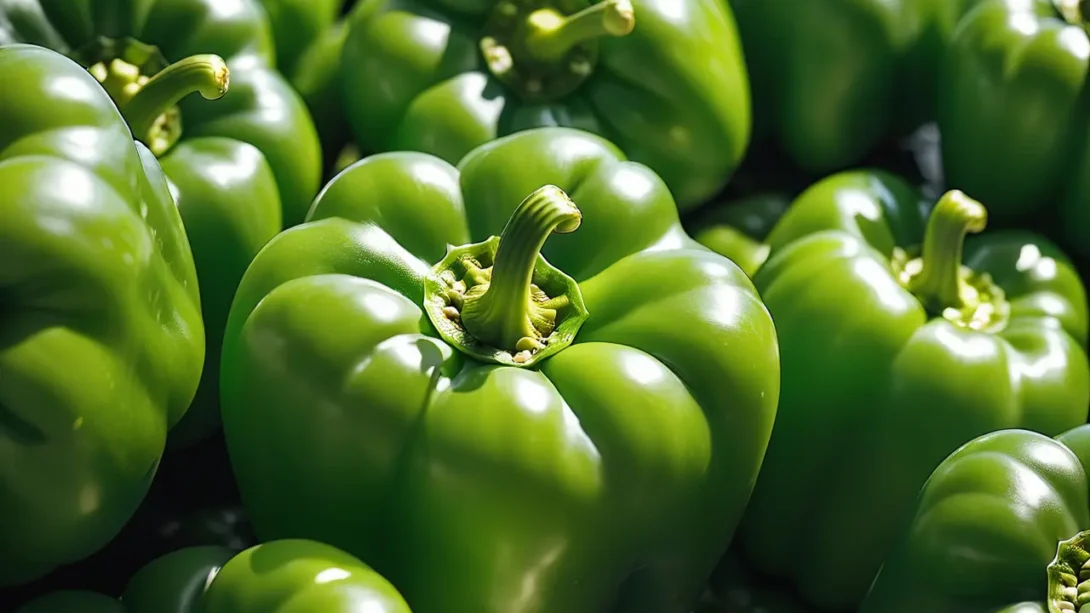Green peppers, with their crisp texture and vibrant color, are a staple in many kitchens. But beyond their appearance, one of the most sought-after qualities in these peppers is sweetness. Whether you’re adding them to salads, stir-fries, or stuffing them for a hearty meal, the level of sweetness can significantly impact the flavor of your dishes. In this article, we delve into the world of green peppers to uncover which variety offers the sweetest taste.
Sweetness in Green Peppers
To appreciate the sweetness of green peppers, it’s essential to understand the factors that contribute to it. One of the primary determinants is the sugar content within the peppers. As peppers ripen, their sugar content increases, leading to a sweeter flavor profile. However, the variety of pepper also plays a crucial role. Bell peppers, cubanelle peppers, and banana peppers are among the most popular varieties, each offering its unique level of sweetness. Additionally, external factors such as growing conditions, harvesting methods, and post-harvest handling can influence the overall sweetness of the peppers.
Varieties of Green Peppers
Bell Peppers
Bell peppers, with their crisp texture and mild flavor, are a favorite choice for many culinary enthusiasts. These peppers come in various colors, including green, red, yellow, and orange, with the green variety being the least ripe. While green bell peppers are known for their slightly bitter taste compared to their ripe counterparts, they still offer a subtle sweetness that enhances many dishes. Commonly used in salads, sandwiches, and sautés, green bell peppers add a refreshing crunch and a hint of sweetness to any recipe.
Cubanelle Peppers
Cubanelle peppers, also known as Italian frying peppers, are elongated with a thin skin and a slightly curved shape. These peppers are popular in Mediterranean cuisine for their mild, sweet flavor and versatile nature. While they resemble banana peppers, cubanelle peppers are typically sweeter with a subtle heat. Often used in frying, grilling, or stuffing, cubanelle peppers add a delightful sweetness to dishes without overpowering other ingredients.
Banana Peppers
Banana peppers are another variety prized for their sweetness and mild heat. With their elongated shape and bright yellow color, these peppers offer a tangy, slightly sweet flavor that complements a wide range of dishes. Whether pickled, stuffed, or added fresh to salads and sandwiches, banana peppers contribute a pleasant sweetness that balances savory and acidic flavors.
Factors Affecting Sweetness
Beyond the inherent characteristics of each green pepper variety, several external factors can influence their sweetness. One such factor is the growing conditions in which the peppers are cultivated. Peppers thrive in warm, sunny climates with well-drained soil. Adequate sunlight and water contribute to the development of sugars within the peppers, enhancing their sweetness. Additionally, soil quality and nutrient levels can impact the overall flavor profile of the peppers, with nutrient-rich soil often yielding sweeter peppers.
Harvesting methods also play a significant role in determining the sweetness of green peppers. Peppers are typically harvested at various stages of ripeness, with some varieties, such as bell peppers, being picked when still green to prolong shelf life and enhance durability during transportation. However, peppers left to ripen fully on the plant tend to develop higher sugar content and thus offer a sweeter taste. Selecting peppers at peak ripeness ensures optimal sweetness and flavor, though this may vary depending on the variety.
Post-harvest handling practices, including storage and transportation, can further impact the sweetness of green peppers. Proper handling and storage techniques help preserve the peppers’ freshness and flavor. Exposure to excessive heat or prolonged storage periods can cause peppers to lose moisture and sweetness, resulting in a less flavorful end product. Therefore, maintaining optimal storage conditions, such as cool temperatures and adequate ventilation, is essential for preserving the sweetness of green peppers.
Comparing Sweetness
To determine which green pepper variety reigns supreme in sweetness, we conducted a series of taste tests comparing bell peppers, cubanelle peppers, and banana peppers. Each pepper was sampled in its raw form to assess its natural sweetness and flavor profile. Additionally, feedback from consumers and chefs was gathered to gauge preferences and culinary applications for each variety.
Bell peppers, with their mild sweetness and crisp texture, were favored for their versatility in various dishes. While not as sweet as their ripe counterparts, green bell peppers offered a subtle sweetness that complemented savory and acidic ingredients well. Many consumers appreciated their refreshing crunch and mild flavor, making them a popular choice for salads, stir-fries, and stuffed pepper recipes.
Cubanelle peppers, known for their slightly sweeter taste and thin skin, were favored for their tender texture and mild heat. The peppers’ elongated shape and vibrant color added visual appeal to dishes, while their sweet flavor enhanced the overall taste experience. Chefs particularly enjoyed using cubanelle peppers in frying and grilling applications, where their sweetness intensified, creating caramelized, flavorful results.
Banana peppers, with their tangy, sweet flavor and subtle heat, were a hit among consumers and chefs alike. The peppers’ bright yellow color and distinct flavor profile made them a standout ingredient in salads, sandwiches, and pickled dishes. Many consumers appreciated their mild heat and pleasant sweetness, which added depth and complexity to various recipes.
Conclusion
After extensive exploration and taste testing, it’s clear that each variety of green pepper offers its unique sweetness and flavor profile. While bell peppers, cubanelle peppers, and banana peppers all have their merits, determining the ultimate winner in sweetness depends on personal taste preferences and culinary applications.
For those seeking a mild, versatile option with a subtle sweetness, green bell peppers are an excellent choice. Their crisp texture and mild flavor make them suitable for a wide range of dishes, from salads to stir-fries to stuffed peppers.
If you’re looking for a slightly sweeter pepper with a tender texture and mild heat, cubanelle peppers are worth considering. Their elongated shape and thin skin lend themselves well to frying and grilling, where their sweetness intensifies, creating delicious caramelized flavors.
For those who prefer a tangy, sweet pepper with a hint of heat, banana peppers are an ideal choice. Whether pickled, stuffed, or added fresh to dishes, banana peppers offer a unique flavor profile that enhances the taste of salads, sandwiches, and other recipes.
Ultimately, the sweetest green pepper variety is subjective and may vary depending on individual taste preferences and culinary needs. We encourage you to experiment with different varieties and discover which one best suits your palate and recipe requirements.
In conclusion, whether you’re adding them to salads, stir-fries, or sandwiches, green peppers can elevate the flavor of your dishes with their natural sweetness. By understanding the factors influencing sweetness and comparing the taste profiles of different varieties, you can make informed choices to enhance your culinary creations.




